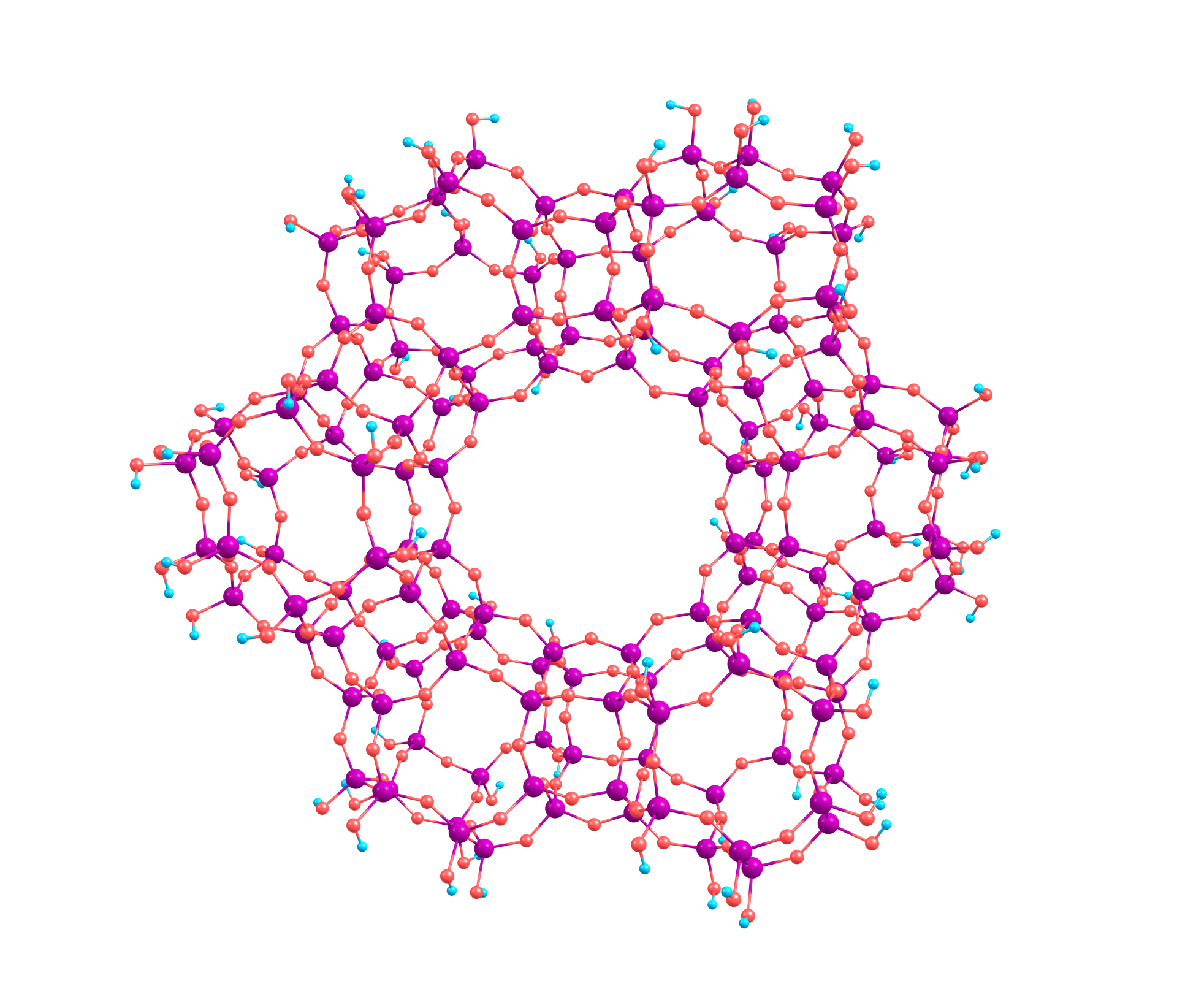AZ™ FAQ’S
What is Zeolite?
Zeolites are microporous, three-dimensional crystalline solids of aluminium silicate. Zeolites have small openings of fixed size in them which allow small molecules to pass through them easily, but larger molecules cannot pass through them; that is why they are sometimes called molecular sieves. Zeolite is not clay. It will not break down or change structure over time.
Describe Asia Zeolite AZ™?
About 60 natural zeolites have been identified during the past 200 years, one of the most common is clinoptilolite which is the dominant zeolite species at AZTM ‘s mineral deposit located on the coast of South Sumatra Island, Indonesia. AZTM ‘s clinoptilolite is in the top echelon of global zeolite deposits based on purity (>95%) and CEC values (155-213 meq/100gm). Naturally occurring zeolites are often formed with contaminants including metals, quartz or clays and thus downgrade the mineral’s effectiveness in commercial applications.
What is Zeolite used for?
Because of its porous structure Zeolite owes its commercial value to three properties adsorption, ion exchange and catalysis. Industry usages are wide ranging including animal feed additives, soil & potting mix amendments, water treatment, construction & building materials, waste treatment, spill remediation, heating & binding, medical & cosmetic and the list goes on.
What is Cation Exchange Capacity (“CEC”) and why higher CEC Zeolites like AZ™ are sought after?
Zeolite is one of the rare minerals that possess a natural negative charge. The combination of the honeycomb structure and net negative charge allows zeolite to both absorb liquids and adsorb elements based on the strength of the chemical bond. The electrostatic attraction an element has to zeolite is called the CEC (“Cation Exchange Capacity”) value. The higher the CEC value the more cations that the porous zeolite structure can hold. For agriculture & horticulture applications this means higher retention levels of slow-release fertilizer/nutrients & water preservation, along with elevated soil buffering capacity levels. In waste treatment and spill remediation higher CEC zeolite will absorb larger amounts of harmful cation ions and thus are more cost coefficient compared to lower grade CEC equivalents.
Zeolites are microporous, three-dimensional crystalline solids of aluminium silicate. Zeolites have small openings of fixed size in them which allow small molecules to pass through them easily, but larger molecules cannot pass through them; that is why they are sometimes called molecular sieves. Zeolite is not clay. It will not break down or change structure over time.
Describe Asia Zeolite AZ™?
About 60 natural zeolites have been identified during the past 200 years, one of the most common is clinoptilolite which is the dominant zeolite species at AZTM ‘s mineral deposit located on the coast of South Sumatra Island, Indonesia. AZTM ‘s clinoptilolite is in the top echelon of global zeolite deposits based on purity (>95%) and CEC values (155-213 meq/100gm). Naturally occurring zeolites are often formed with contaminants including metals, quartz or clays and thus downgrade the mineral’s effectiveness in commercial applications.
What are the differences between Zeolite and Bentonite?
Zeolite has a crystal lattice which remains stable and rigid in contact with water; is harder; has less water retention and binds positive cations due to its negative charge. Bentonite is a clay with a layered structure that swells in water & forms a gel film; has a higher water retention and has an affinity for absorption of negative charged cations.
Is consumption of Zeolite dangerous for humans?
Consumption of zeolite by human is considered safe and endorsed by most federal health authorities. Many zeolite products (powders, lotions & creams) are sold for their therapeutic abilities.
Describe Asia Zeolite AZ™ mining and milling operations?
With little or no soil cover AZTM ‘s clinoptilolite is easily ripped, not requiring a drill and blast approach. Some rock breaker action is required in selective areas. Benches are 4-5metres highs. Daily grade control (CEC and clinoptilolite levels) is done in the Company’s onsite laboratory. Limited overburden is stored in a temporary location and will be later reclaimed as part of the approved Company’s mining plan. With the milling plant located within the quarry area truck haulage distance is less than 200 metres. The milling plant uses standard industry crushing circuits with tight specifications maintained in screening operations to deliver a range of size fractions.
What are the available Asia Zeolite AZ™ products available?
AZ™ Zeolite products {Linked to AZTM Product Guide} are available in either 1 tonne metric jumbo bags or 25/50 kg sacks dependent on the requested size fraction.
What are the differences between Zeolite and Bentonite?
Zeolite has a crystal lattice which remains stable and rigid in contact with water; is harder; has less water retention and binds positive cations due to its negative charge. Bentonite is a clay with a layered structure that swells in water & forms a gel film; has a higher water retention and has an affinity for absorption of charged cations.
Is consumption of Zeolite dangerous for humans?
Consumption of zeolite by human is considered safe and endorsed by most federal health authorities. Many zeolite products (powders, lotions & creams) are sold for their therapeutic abilities.
Describe Asia Zeolite AZ™ mining and milling operations?
With little or no soil cover AZTM ‘s clinoptilolite is easily ripped, not requiring a drill and blast approach. Some rock breaker action is required in selective areas. Benches are 4-5metres highs. Daily grade control (CEC and clinoptilolite levels) is done in the Company’s onsite laboratory. Limited overburden is stored in a temporary location and will be later reclaimed as part of the approved Company’s mining plan. With the milling plant located within the quarry area truck haulage distance is less than 200 metres. The milling plant uses standard industry crushing circuits with tight specifications maintained in screening operations to deliver a range of size fractions.
What are the available Asia Zeolite AZ™ products available?
AZ™ Zeolite products {See Product Guide} are available in either 1 tonne metric jumbo bags or 25/50 kg sacks dependent on the requested size fraction.



